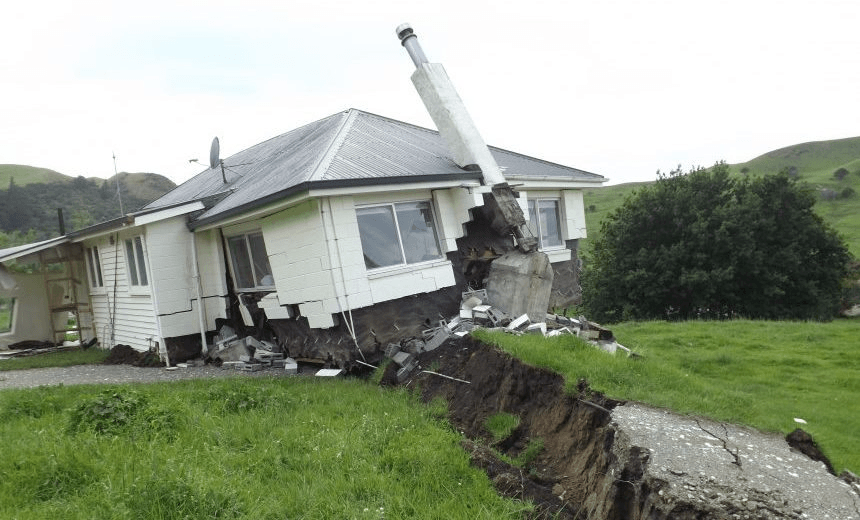The Kaikoura earthquake underlines the need a 24/7 monitoring centre for geohazards, writes NZ GeoNet director Dr Ken Gledhill in a moving message that pays tribute to New Zealanders’ response and the extraordinary staff at GeoNet.
As I said in a previous post about the five-year anniversary of the 22 February 2011 Christchurch Earthquake, I’m much more comfortable with numbers and technology than I am with words (apart from scientific papers!). But I’m going to try my best, again, so please bear with me.
With the flooding, earthquakes and tsunami, it feels like Central New Zealand is getting a hammering by our most brutal project manager: nature. And nature has been particularly demanding in the last 48 hours and I just want to share a few of my thoughts about what is going on.
M7.5 Earthquake: a monster in the making
As a geophysicist, there are a few important things to know about this quake and they are already available in various places and forms. It was a monster quake, one that has shocked us all with its intensity and ferocity. Because of its size it made our world shake strongly but relatively slowly for a very long time. It is a complex, brooding beast we are still trying to understand. Although we published information on it very quickly, please forgive us as we tell you more and revise what we have already told you.
Tsunami: those who took action did the right thing
In terms of the tsunami, I said it here in the M7.1 East Cape Earthquake. Because we do not have a 24/7 monitoring centre we have to wake people and get them out of bed to look at complex data and make serious calls very quickly. It is not an ideal situation given the past few months and I’d like to change that by getting support for a 24/7 monitoring centre for geohazards. I’m going to be blatant in my campaigning for this, because I think we need a 24/7 monitoring centre to respond to these kinds of events.
But, even with a 24/7, we may still not have been fast enough for people in Kaikoura. The best advice is still: if you are at the coast, and feel a long or strong earthquake, be gone. For those people who took those brave steps in the middle of the night of the tsunami, I applaud your efforts. YOU DID THE RIGHT THING. For people who were further away and waited but left once told to evacuate, YOU ALSO DID THE RIGHT THING. We were lucky the tsunami struck at low tide; high tide could have left more damage than I feel comfortable thinking about.
Moon and earthquake lights
GeoNet only reports on things we can measure. This is why we stick to our knitting: geophysical data. We know that people are really interested in what we think about the supermoon or earthquake lights, but we just don’t have any way to measure their effects using the GeoNet sensors. So, I am just going to leave that topic for other people to discuss.
Kiwis: we’re a unique type of tough
I just want to say a few words about people. This is a painful time. People have died and we mourn with their family and friends. I can only imagine how people are struggling right now in Kaikoura, Ward, and Waiau and the other affected regions. Also, people in Christchurch are experiencing reminders of an earthquake nightmare they might have thought was over, only to realise that sadly, earthquakes are part of the standard operating procedure here in New Zealand. In the Wellington region, we are now experiencing intense flooding, complicating our ability to recover from this earthquake. This combination of hits from nature is exhausting and upsetting.
But here is the upshot. One thing I know about us Kiwis, we are prepared, tough, and able to cope with almost anything. It is perfectly acceptable to be scared by this earthquake but we will get through this by doing what I think Kiwis do best: helping each other. We saw this with the Canterbury earthquakes and we are seeing this again. We are also good at taking care of our visitors and our new Kiwis as well.
I can’t relieve anyone’s anxiety about future earthquakes; more will come. What I can say is that preparedness, that old Civil Defence and Emergency Management mantra, is the best solution to being ready for these events. Please visit our friends at the Ministry of Civil Defence and Emergency Management to find out how you can prepare. To learn more about your tsunami evacuation zones and advice, visit your local and regional council. To learn how to keep your china, house and other precious items safe, visit our friends and funders, EQC.
To our GeoNet staff: a huge thank you
Finally, I just want to say a few words about my staff. I’ve been the director for more than a decade and they have never let me or New Zealand down. Their service to New Zealand, science and people, is phenomenal. They really care about what they do. I thank them for their tireless efforts, keeping GeoNet functioning, sleepless nights locating earthquakes or even sending that late night cheeky tweet. What makes GeoNet a world class geohazards monitoring system is not our instruments (as much as I love the technology), but our people. When people send kind words via social media or emails or phone calls, my staff feel that support deeply, so thank you.
Republished from the GeoNet blog with permission.


